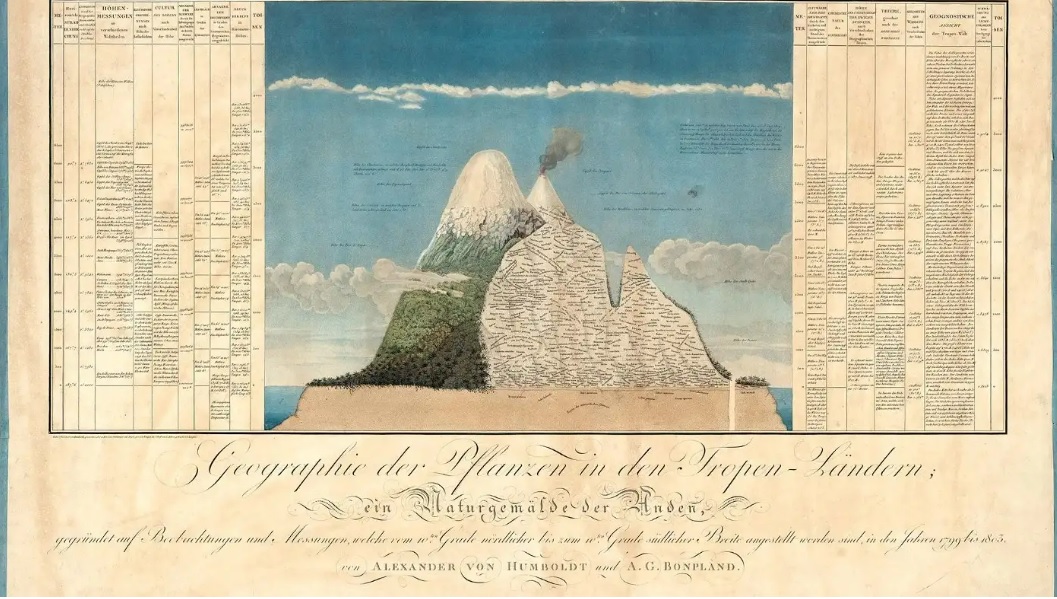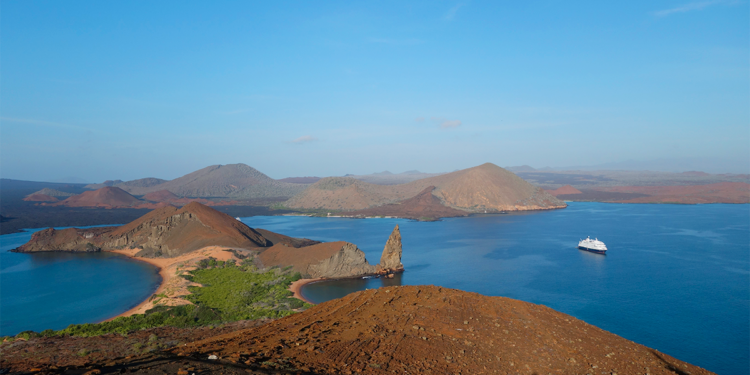The Galápagos Islands, formed by a volcanic eruption some 600 miles off the coast of Ecuador, is a protected natural laboratory for specimens that have come to it from various ways, whether by water, flight, or vegetation, and brought apparently by both wind and water. Ever since Darwin spent time there, drawing major conclusions from his bird watching that fed into his concept of evolution, the Galapagos have stayed high in both popular imagination and scientific research even though in recent years, arguably more could be done.
Now, with the “debt-for-swap” instrument proposed at the recent COP27 meeting in Egypt, the Galápagos are occupying headlines and hope is high that its role in the environmental movement will once again occupy a place of choice.
“There’s now a big push to get nature into sovereign debt markets,” said Simon Zadek, executive director at NatureFinance, which advises governments on debt-for-nature swaps and other types of climate-focused finance. The question has suddenly become: What is the Galápagos Islands’ ecological value, what is its ecosystem worth?
It is suggested that the Galápagos could be worth around $800 million, the amount that Ecuador’s sovereign debt could be cut if the government agreed to get into a swap deal that would, in exchange, call on it to protect its unique natural environment.
So how did all this interest in a remote archipelago off the coast of Ecuador start?
Contrary to popular notions, the Galápagos’ link to scientific research began not with Darwin – though Darwin’s role was crucial, he spent only five weeks there in 1835 (he was just 22) but his observations of the wildlife that he saw there formed the basis of his theory of evolution. One needs to go back earlier in time, to Alexander Humboldt who gave his name to one of the most likely means of transport of the specimens populating the islands: the Humboldt Current.
Unfortunately, today, the currents bring toxic garbage to the islands, from abandoned fishnets that trap sea lions to, most concerningly, plastic and micro-plastics, the worst threat yet to its unique and fragile environment:
The role of Humboldt in raising public awareness of the environment and launching a movement to protect nature
Alexander von Humboldt was a Prussian aristocrat born in the eighteenth century and a true genius of science and worldwide exploration, a respected friend of both Simon Bolivar and Thomas Jefferson. Humboldt was the first to discover that seawater flows are colder than the surrounding air and that their speed increases rapidly as they move away from the coast.
In 1800, while traveling in Venezuela and seeing its forests destroyed and soils depleted by European colonists and planters, Humboldt bemoaned how humankind was changing the climate, thus unwittingly becoming the father of the environmental movement.
Humboldt’s seminal thinking and concepts were further refined during his travels to Ecuador. In 1802 he led a scientific expedition that included his trusted friend and companion Aimé Bonpland. They climbed the Chimborazo volcano some 100 miles from Quito, which rises over 6000 meters (20,000 feet), elevations so high even condors do not fly near them, and where nothing grew.
Besides the Chimborazo, the expedition surveyed all the major Ecuadorian mountains, Pichincha, Antisana, Corazón, Ilinizas, Tungurahua, Cotopaxi. And Humboldt named “Avenue of the Volcanoes” the whole Inter-Andean valley with more than 70 volcanoes with 27 of them still active.
Humboldt was never shy in expressing opinions – he is quoted as saying about Ecuadoreans, “I don’t understand why they live next to an active volcano and get happy with sad music and sad lyrics”.
His exploration documented vegetation, animals, changes in altitudes and temperature. In particular, important botanical information, with a collection of more than 60,000 specimens and thousands of species that were new to science, was assembled.
The Chimborazo, which happens to be the mountain with the closest elevation to the sun from the earth’s core, drew Humboldt’ attention and the scientists put together all the data they gathered about temperature, elevation, fertility, land use, vegetation, fauna etc, into a folio, known as the Naturgemälde. This remarkable graphic document is considered today history’s first infographic, putting scientific information into images:

For Humboldt, his expedition in Ecuador became the existential experience that formed the basis for much of his future work and vision, described in Andrea Wulf’s recent superb book, “The Invention of Nature: Alexander von Humboldt’s New World”.
In 1879, one hundred years from his birth, this extraordinary man was hugely celebrated throughout the world, with parades and tributes. Today, however, his foundational role in environmental movements has not been equally recognized, eclipsed by later thinkers, most of whom drew on his concepts.
Probably the best known figure in natural science is Darwin with his concept of evolution, showing how the many different species, in particular birds found on the Galápagos, are able to specialize and adapt to environmental conditions.
In this regard, of particular interest is “The Beak of the Finch, A Story of Evolution in Our Time” by Jonathan Weiner that describes research by Peter and Rosemary Grant, two scientists who spent more than twenty years probing Darwin’s theories. Darwin was perhaps more, if not equally interested in the mocking bird, but it was the finch that got bird headlines.
In the Weiner book there is concern that progress in development of new concepts has been slow:
“In 1990, in a one-volume Encyclopedia of Evolution, a physical anthropologist wrote that the complaint of a half-century holds good:The number of experimental tests of natural selection is pitiful, the few that have been conducted still do heavy duty as exemplars.”
However, we are now some thirty years later, and new technologies may provide the evidence base and pathways for new theories, and heighten the Galapagos value and its importance in the twenty-first century.
A renewed role for the Galapagos in the environmental movement
The World Wildlife Fund (WWF) is now engaged with the Government of Ecuador in an effort to protect the natural wonders of the Galápagos through a “debt-for-nature” swap amounting, as mentioned above, up to perhaps $800 million.
The proposal was made at the global environmental conference, COP 27, in Egypt but it should be noted that it is not yet agreed to. If successfully concluded, this “debt-for-nature”” swap will be an important step in preserving an irreplaceable living laboratory for people around the world. And it could help turn the Galápagos into a model for other countries to follow.
But measured optimism must be tempered with words of caution: The Galápagos need protection from the many ways humans can have negative effects, well beyond those which Humboldt saw on the ground.
In addition to the afore-mentioned threat of plastic pollution brought by sea currents, there are very real public health concerns. Humans can potentially bring infectious disease to the islands.
We are in the midst of a pandemic, namely Covid. And while the probability is low, humans in close contact with animals have been known to infect other animals, albeit with most of the limited research related to domestic pets.
Fortunately the Ecuadorian Government, WHO, the Charles Darwin Foundation, and responsible tour organizations such as Natural Habitat Adventures are taking steps to avoid the transmission-of-virus possibility requiring visitors to take antigen tests shortly before embarking on a visit. And if testing positive, they are not permitted to visit.
Other infectious diseases lurk as potential threats to the Galápagos wildlife. For instance, Avian flu, carried by poultry for human consumption, could have hugely destructive consequences to the islands’ bird populations. Given recent outbreaks in nearby mainland South America, authorities have imposed severe restrictions on bringing food to the archipelago which might be carriers.
The Galápagos Islands are treasures that must be preserved for many reasons including better understanding of the relationships of flora, fauna, and climate change, in short, the speed of natural evolution.
Humboldt opened minds to this line of thinking, and others have followed in his footsteps. We better not squander these valued contributions to our future.
My heartfelt thanks go to Josephine Cardoso, Sofía Darque and Giancarlo Toti for their contribution to this article – all three are strong conservation advocates, raised and living in the Galapagos where they have worked for years as naturalists and professional guides.
Editor’s Note: The opinions expressed here by the authors are their own, not those of Impakter.com — In the Featured Photo: Bartolomé Island, part of the Galàpagos Featured Photo Credit: Environmental Incentives article about “Las Islas Encantadas”









